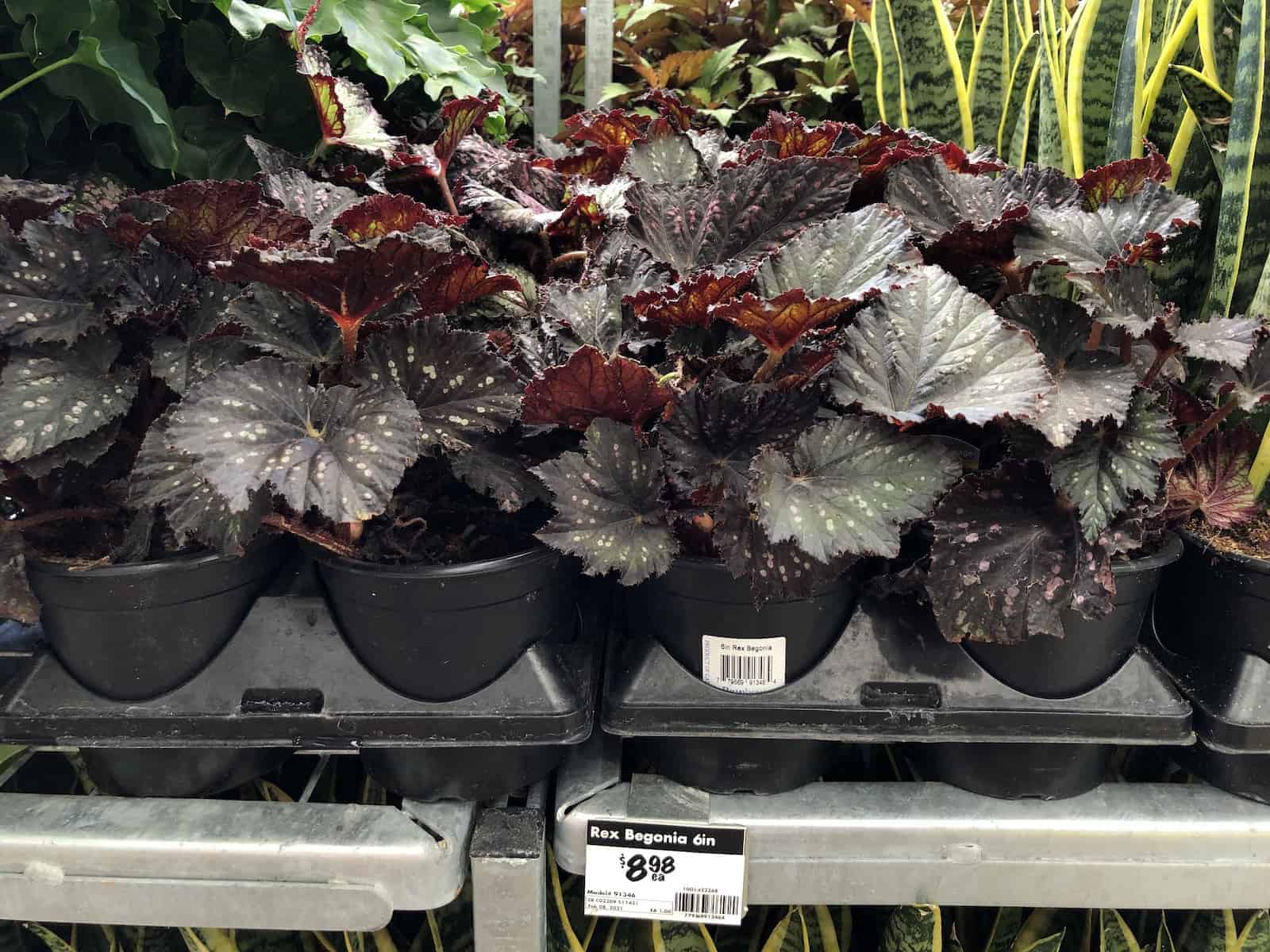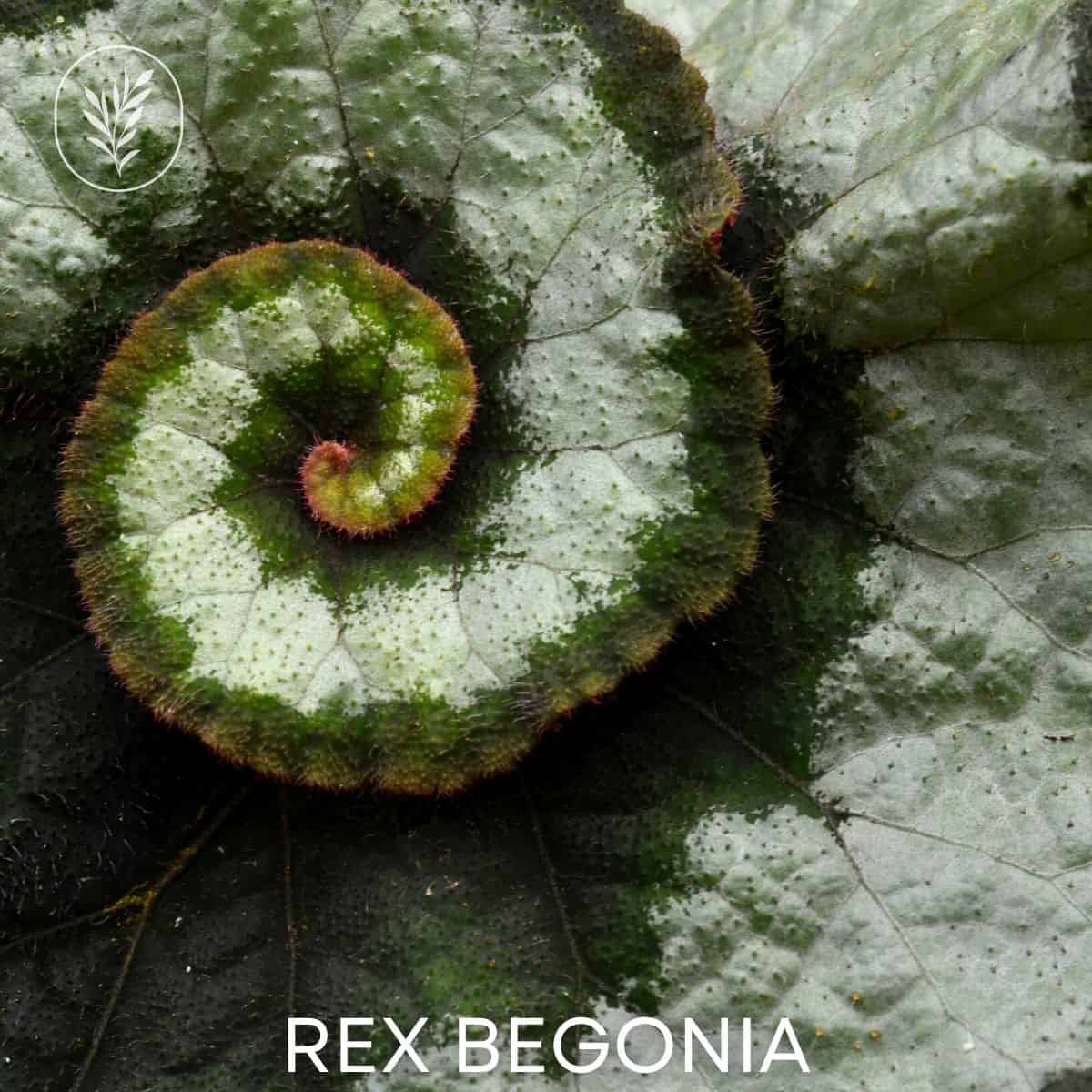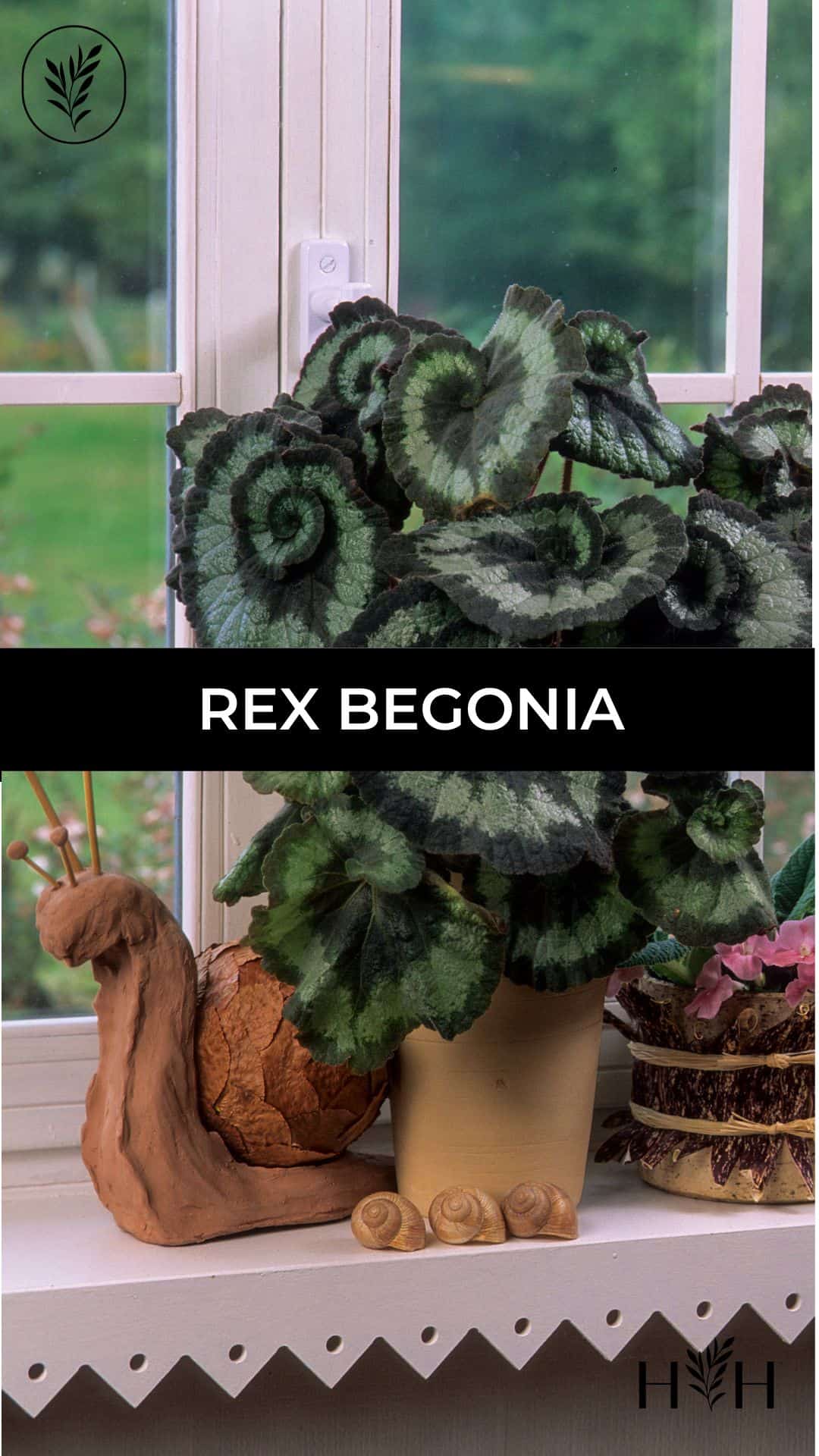While there are quite a few lovely must-have houseplants, a plant-lovers collection isn’t complete without one (or three, or ten) Rex begonias.
Rex begonia is popular houseplant grown around the world for its ornamental foliage. These rhizomatous begonias are easy to care for and available in many different foliage shapes, colors, and patterns. Many have striped or variegated foliage, and some cultivars have spiral-shaped leaves. There are over 500 types of Rex begonia available!
Read on to learn all about Rex begonias.
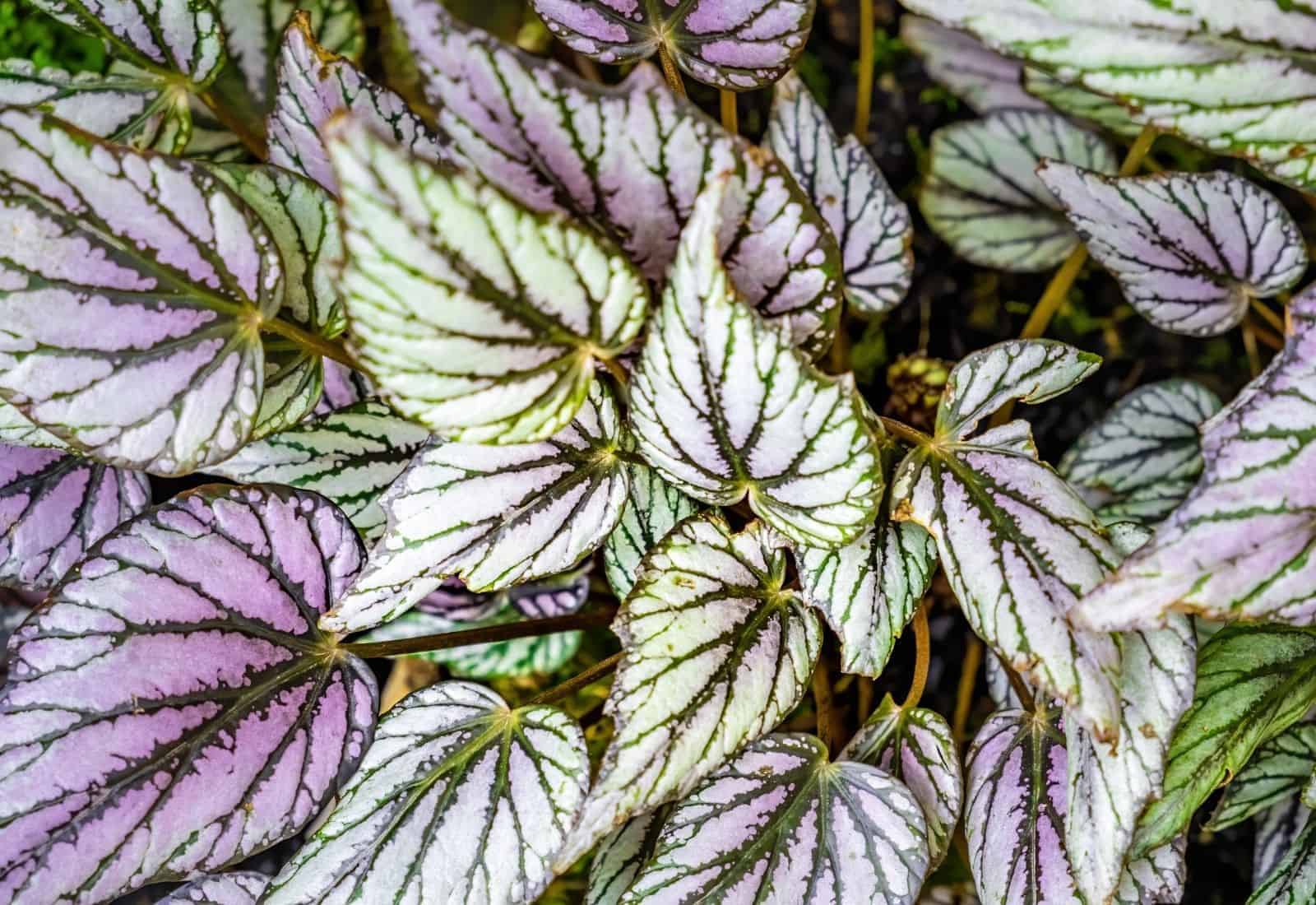
Rex Begonia basics
Rex begonia is a flowering perennial plant grown mainly for its ornamental foliage. Rex begonias are rhizomatous begonias, and are native to northeast India and southeast China. Numerous named cultivars have been bred and selected, many of which are common houseplants around the world.
The “Begonia Rex Cultorum Group” refers to begonia cultivars with Begonia rex as a parent, currently counting well over 500 different types. Rex begonias are also called painted-leaf begonias and king begonias.
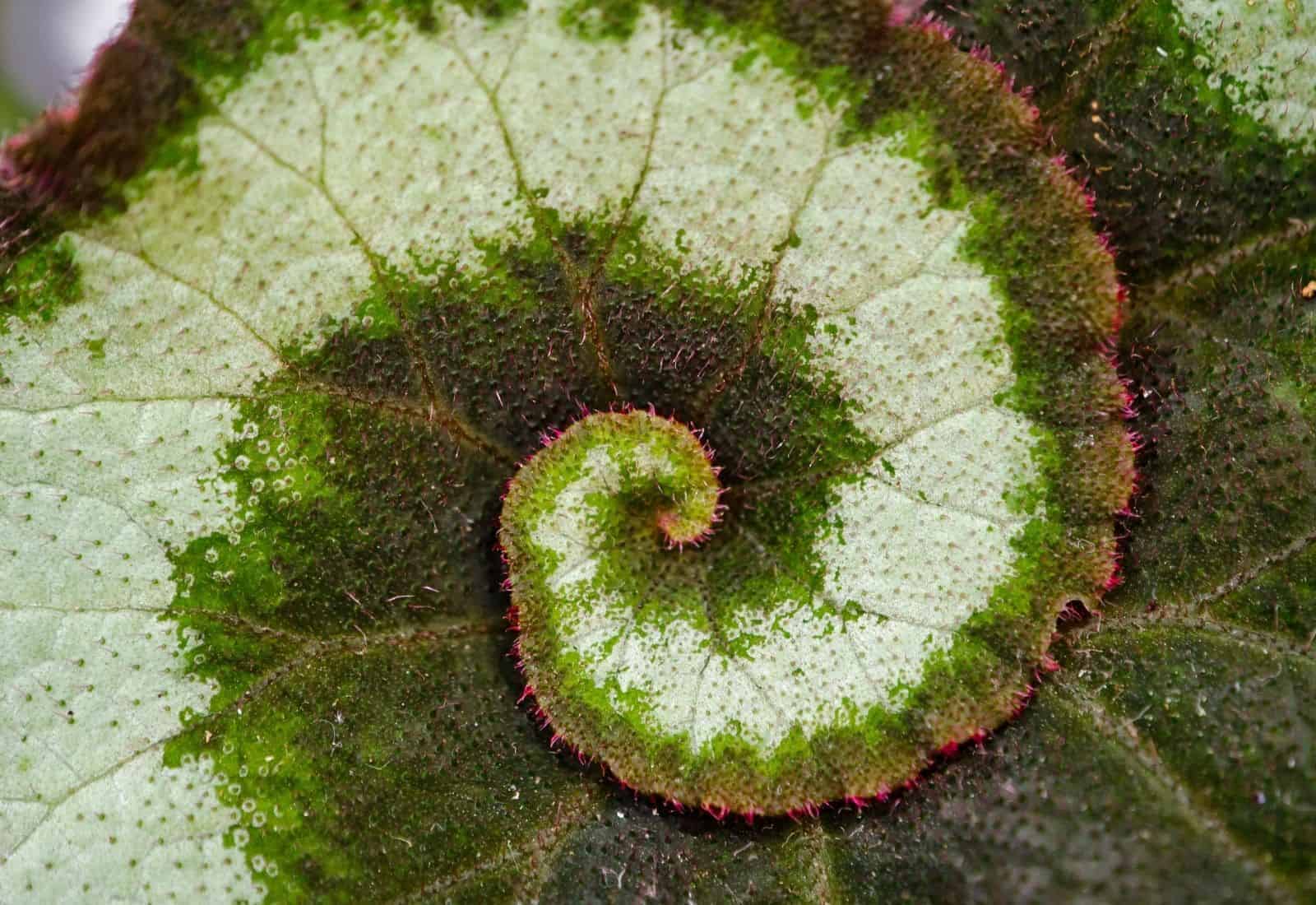
Rex Begonia varieties
Here are some popular varieties of Rex begonia (cultivars):
- Escargot Rex Begonia
- Harmony’s Cupid Rex Begonia
- Heart’s Desire Rex Begonia
- Cherry Blossom Rex Begonia
- Purple Metallic Rex Begonia
- Harmony’s Witchy Woman Rex Begonia
- Festive Pink & Silver Rex Begonia
- Hypnosis Rex Begonia
- Sea Serpent Rex Begonia
- Maui Mist Rex Begonia
- Fireworks Rex Begonia
- Martin Johnson Rex Begonia
- Princess of Hanover Rex Begonia
- Sal’s Comet Rex Begonia
- Carolina Moon Rex Begonia
- Rocheart Rex Begonia
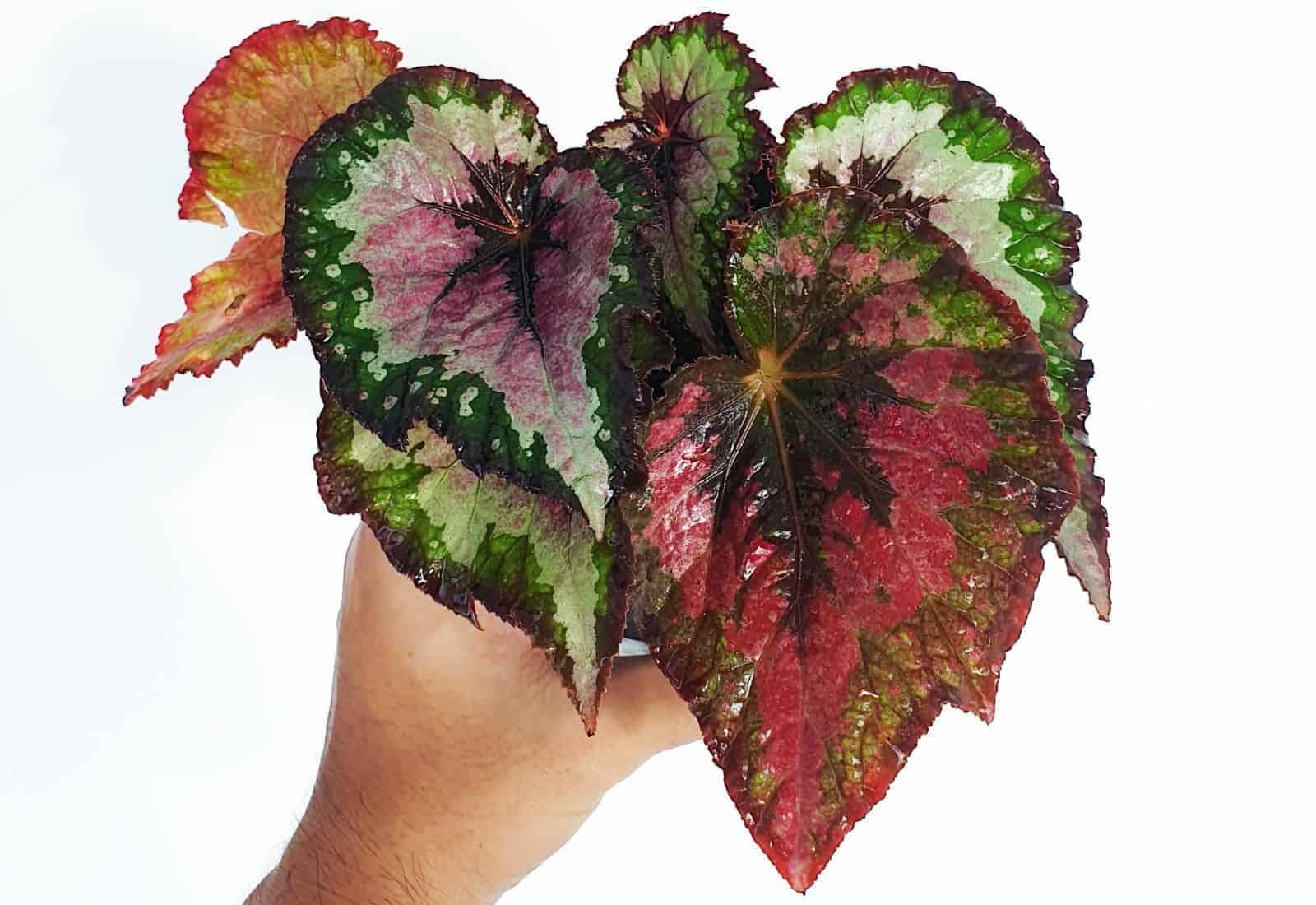
Caring for Rex begonia plants
Rex begonia plants are generally quite easy to care for. They tend to be easier to take care of than many other begonia plants. Here are the basics about caring for Rex Begonias.
Light requirements for Rex begonias
Rex begonia plants grow best when the leaves have access to bright, indirect sunlight. Direct sunlight can burn the leaves, but low-light areas can keep the plant from being able to photosynthesize and create energy. Choose a bright area where sunbeams cannot burn the tender foliage. Rex Begonias grown in low-light areas may be thin and “leggy” and otherwise not-so-healthy.
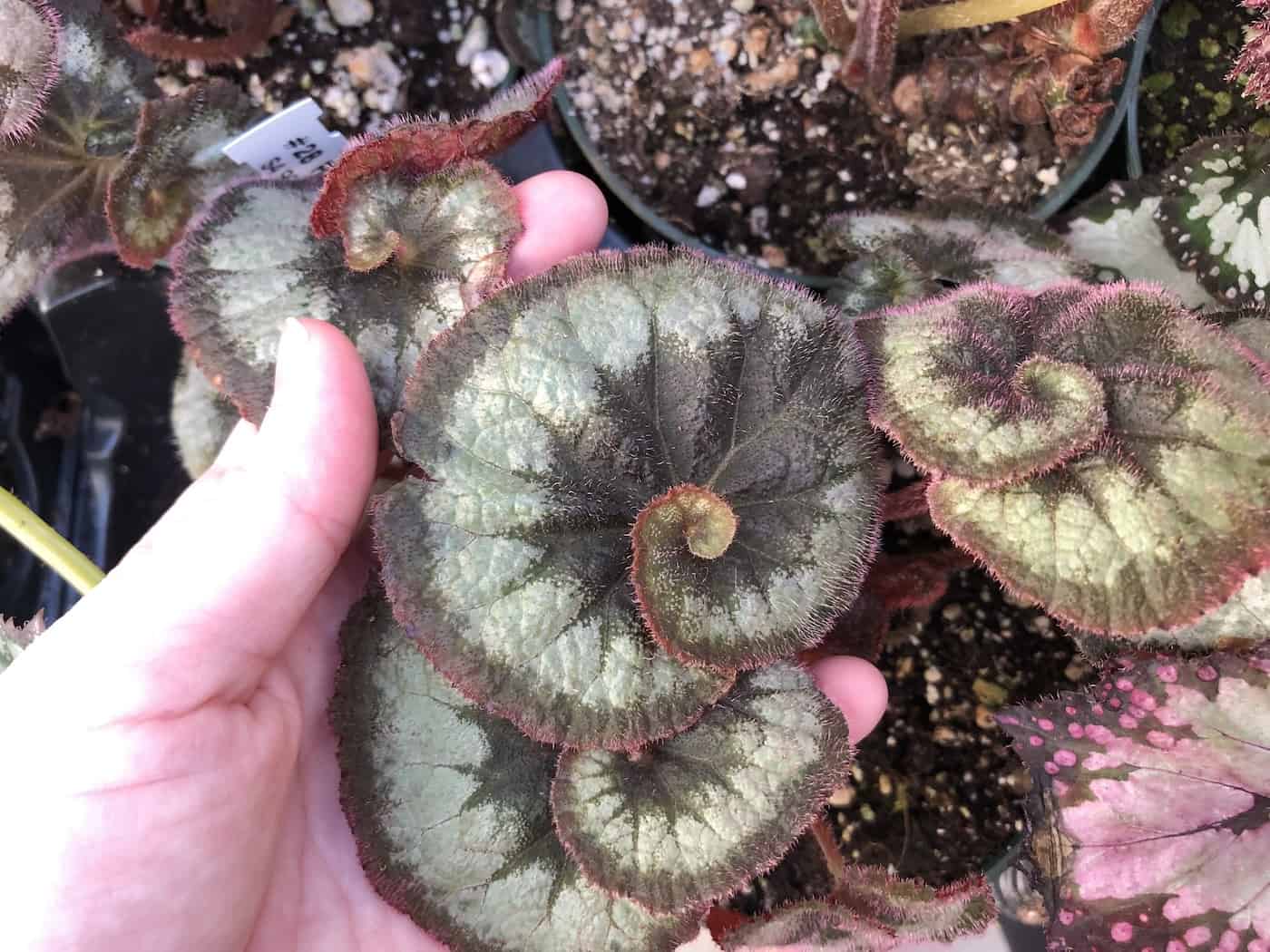
Temperature for Rex begonia
Rex Begonia plants thrive at room temperature. These plants grow best in a comfortable temperature range of 64-70°F (18-21°C). Plants are not cold-hardy, and could potentially be damaged if allowed to go below 50°F (10°C) for any extended length of time. Rex Begonia plants that get too hot may drop their leaves.
Watering Rex begonias
Potted Rex begonias are generally watered once or twice a week, depending on local conditions like air humidity. When watering, water the potting mix deeply and allow all excess water to drain away. Let the soil dry out a bit between waterings. Decrease watering in the winter while the plant is resting. Overwatered Rex Begonia plants may lose leaves.
Try not to get the foliage wet when watering your Begonias. Damp foliage can encourage fungal disease. Use a watering can with a skinny spout to water the soil right at the soil surface rather than showering the whole plant. Here are some suitable watering cans for foliage houseplants like Rex Begonia
Humidity requirements for Rex begonias
Rex Begonias grow best in a high-humidity environment. Misting the plants, however, is not generally recommended as it can lead to leaf scale and potentially to mildew. A more consistent solution is to use a room humidifier to bring the overall atmospheric humidity up.
Fertilizing Rex begonia plants
Rex Begonia plants tend to appreciate a bit of balanced organic houseplant fertilizer. Look for a fertilizer that isn’t overly weighted in nitrogen, as too much nitrogen can lead to loss of color and patterns in the leaves. Phosphorus tends to improve leaf color in nutrient-deficient plants.
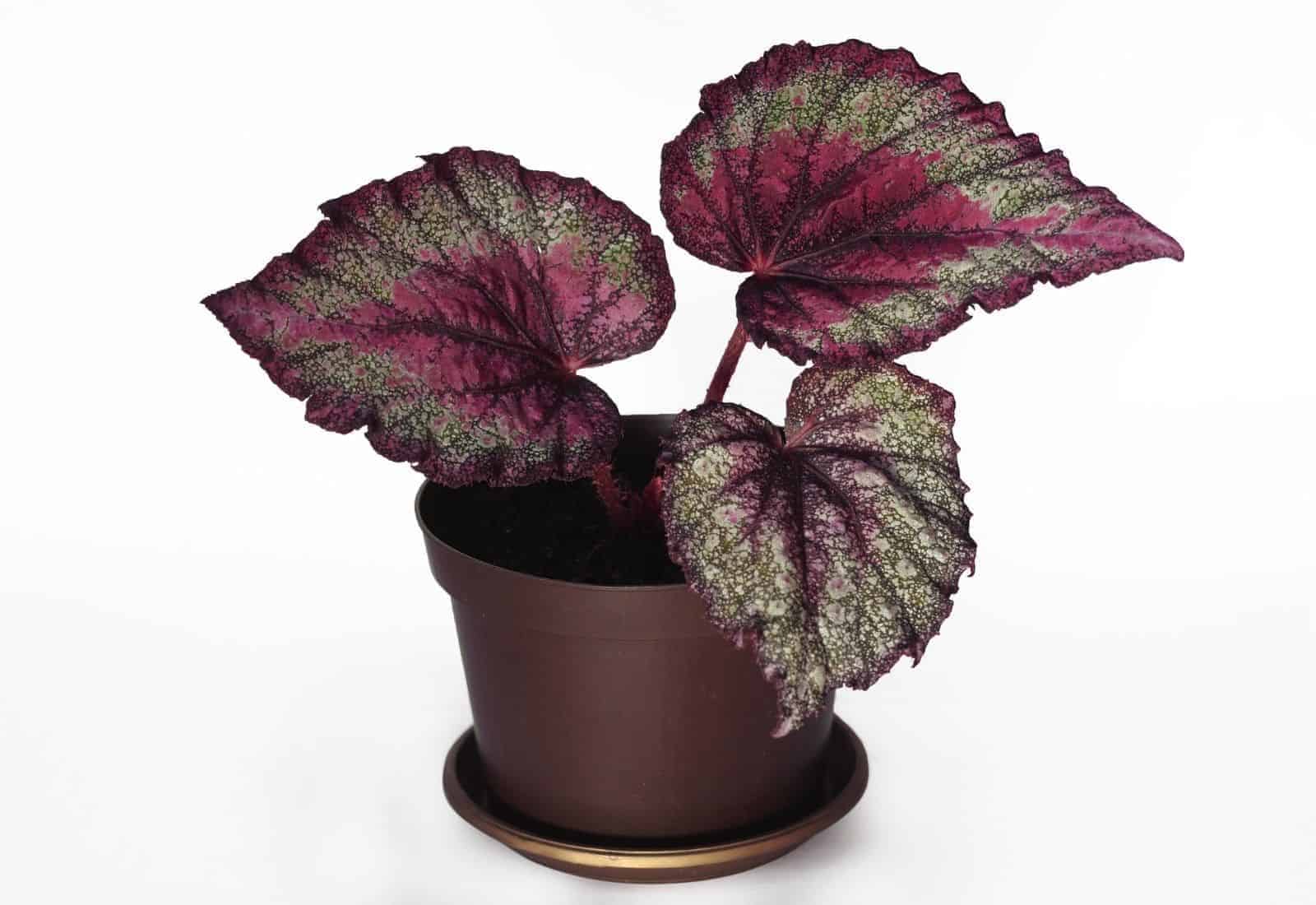
Repotting Rex begonia
Rex Begonias are generally repotted every year or two. Small begonias can be transplanted into a larger planter. Established plants may simply need a refresh of potting mix and a little root pruning. Early spring is the best time to repot Rex Begonias.
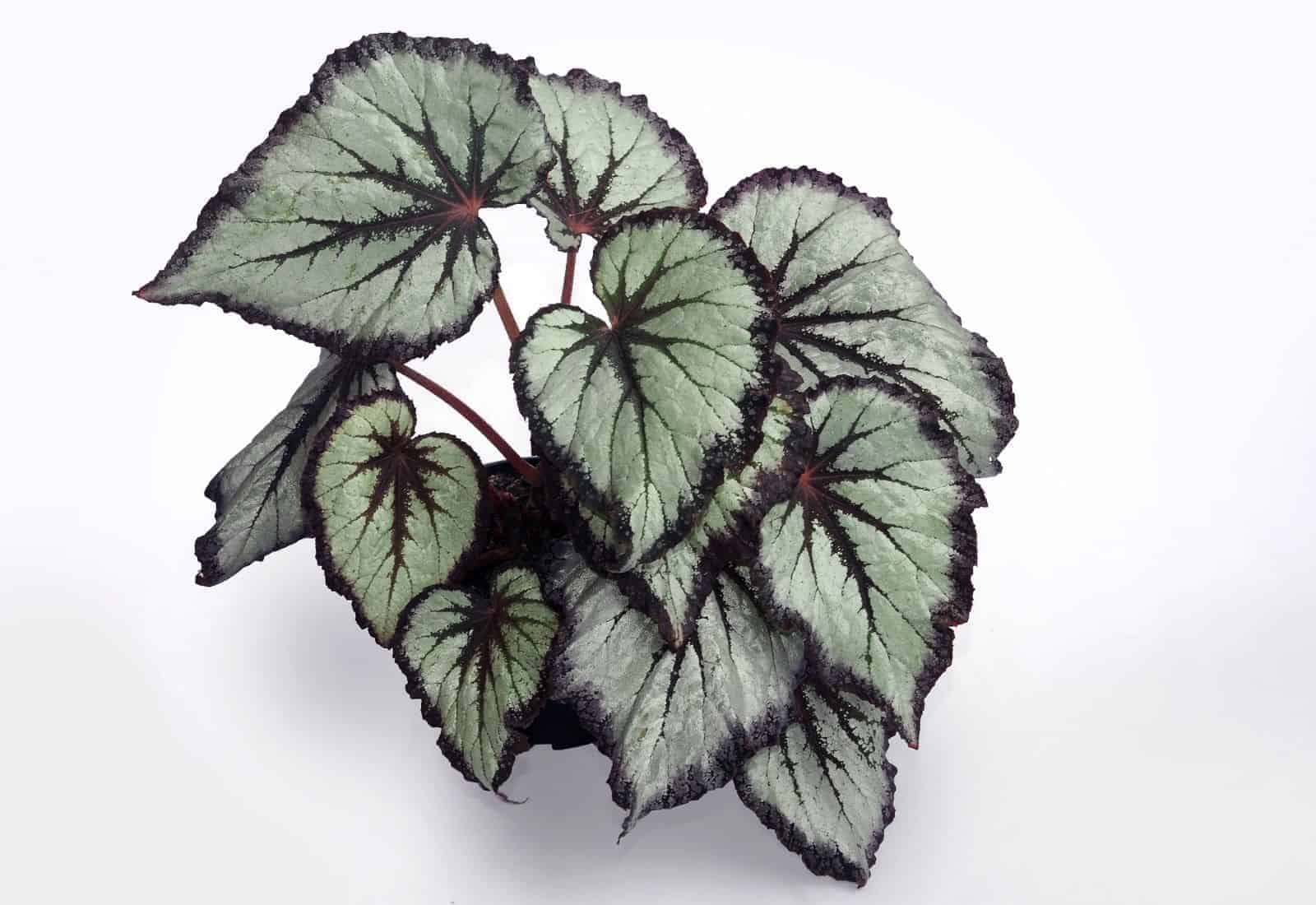
Insect pests affecting Rex Begonia plants
Rex Begonia plants are prone to some common houseplant pest bugs, including spider mites, whiteflies, and thrips.
Spider mites are tiny bugs that live under the surface of the leaves, often near the stems. These mites like hot, dry climates. If you notice spider mites on your Rex Begonias, act quickly to decrease their population. Carefully wash the leaves with soapy water or spray the mites with an organic insecticide. Address dry indoor air with a room humidifier. Continue to address the mites to stop them from proliferating.
Whiteflies are tiny flies that like to live under the leaves of Rex Begonias and other houseplants. Fortunately, they are easy to spray off with water. If possible, spray the plant off outdoors where the whiteflies will be unlikely to find your plant indoors again. Little yellow sticky stake traps are also quite effective in trapping insects and decreasing the population.
Thrips are little brown insects that suck the sap out of Rex Begonia leaves. The attacked foliage has mottled patches or streaks where the thrips have sucked out juices from the plant. Both organic insecticides and sticky traps (like a blue thrip trap) work well against thrips.

Diseases affecting Rex Begonia plants
Rex Begonia plants are vulnerable to several plant diseases, including powdery mildew and gray mold.
Powdery mildew usually looks like a fine white powder on the surface of the leaves. Powdery mildew thrives in hot and humid conditions with poor air circulation. To treat powdery mildew on your Rex Begonia, start by removing the affected leaves. Then treat the plant with a natural fungicide. Lastly, place the begonia in a location with room temperature air where air circulates well.
Gray mold (botrytis) looks like a gray fluff on the Rex Begonia plant. Grey mold thrives in cool and damp conditions with poor air circulation. First, remove the affected leaves and stems. Then treat the plant with a natural fungicide. Lastly, place the begonia in a location with room temperature air where air circulates well around the plant.
